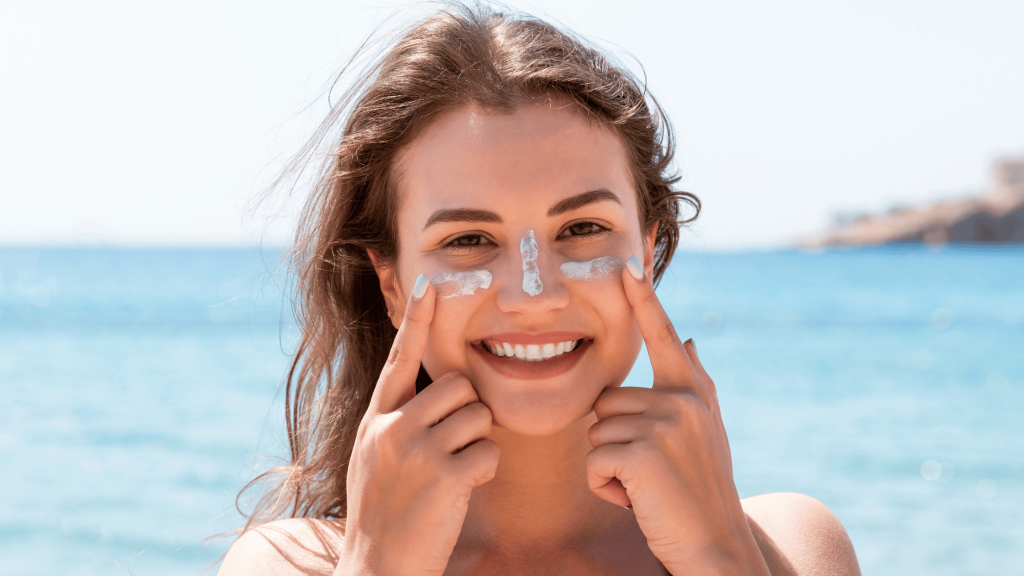
Sunscreen is much more than a mere summer accessory; it’s a crucial part of skin health, guarding us from harmful UV rays and lowering our risk of skin cancer. The importance of sunscreen is universal, regardless of climate or skin type. This comprehensive guide will shed light on the what, why, and how of sunscreen.
Understanding Sunscreen: Protection Against the Sun’s Rays
The sun emits two types of harmful rays: UVA and UVB. UVA rays cause skin ageing and contribute to skin cancer, while UVB rays are the primary cause of sunburn and can also lead to skin cancer. A broad-spectrum sunscreen protects against both types, making it your essential shield for any exposure to sunlight.
Choosing the Right Sunscreen
There’s a vast array of sunscreens on the market, making the selection process a bit daunting. Here’s what you should consider:
1. Broad-Spectrum Protection: As previously mentioned, a broad-spectrum sunscreen protects against both UVA and UVB rays.
2. Sun Protection Factor (SPF): The SPF rating indicates how much UVB radiation the sunscreen can filter out. Dermatologists recommend using a sunscreen with an SPF of 30 or higher, which filters about 97% of UVB rays.
3. Water Resistance: Water-resistant sunscreens are excellent for swimming or heavy sweating. However, remember that “water-resistant” doesn’t mean “waterproof.” You’ll still need to reapply after getting wet.
4. Skin Type: If you have sensitive skin, look for sunscreens labelled “fragrance-free” and “for sensitive skin”. If you have acne-prone skin, opt for oil-free and non-comedogenic (won’t clog pores) sunscreens.
How to Apply Sunscreen Correctly
The correct application of sunscreen is vital for effective protection:
1. Apply Generously: Use at least one ounce of sunscreen (about a shot glass worth) to cover all exposed skin.
2. Apply Beforehand: Sunscreen needs about 15 minutes to absorb into the skin, so apply it before going outside.
3. Don’t Miss a Spot: Pay attention to often-forgotten areas such as your ears, the back of your neck, your feet, and the back of your legs.
4. Reapply Regularly: Sunscreen wears off. Reapply every two hours, and immediately after swimming or heavy sweating.
5. Year-round Use: UV rays are present even on cloudy days or during winter. Make sunscreen application a part of your daily routine.
Our Top Sunscreen Picks
- La Roche-Posay Anthelios Ultra-Light Fluid SPF 50+: This is an excellent choice for those with sensitive skin. It offers broad-spectrum protection and has a light, non-greasy texture.
- Neutrogena Ultra Sheer Dry-Touch Sunscreen SPF 100+: A high-SPF sunscreen suitable for all skin types. It’s lightweight, has a matte finish, and is water-resistant.
- EltaMD UV Clear Facial Sunscreen SPF 46: This sunscreen is perfect for acne-prone skin. It’s oil-free, doesn’t clog pores, and contains niacinamide, which helps reduce inflammation.
Conclusion
Integrating sunscreen into your daily skincare routine is a small act that pays significant dividends in the long run. It’s an investment in your future self, preserving your skin’s health and youthful appearance. Remember, the best sunscreen is the one you’ll use consistently!
Related links:
- Buy Sun Care
- The Importance of Sunscreen in Your Daily Skincare Routine
- Advantages Of Sunscreen: Why Is It Important To Wear SPF Daily?